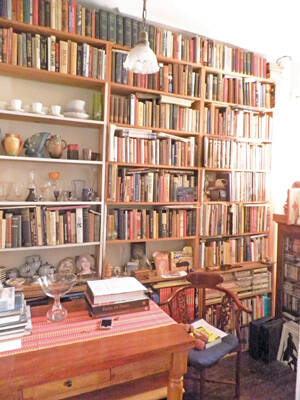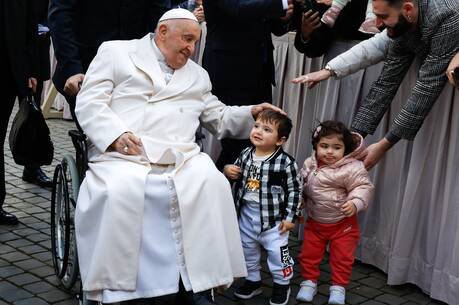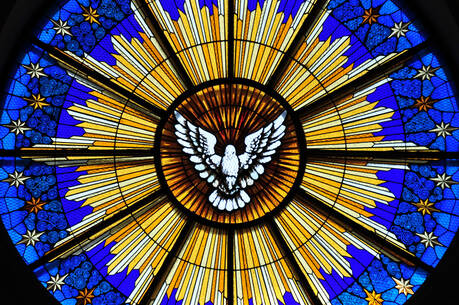It took a full year after we moved house, but finally last summer I tackled the bookshelves in our sun room. This was no small task. The bookshelves rise up 13 feet to the ceiling in this old house. There are lots of shelves and lots of books, too.
When my husband started unpacking the boxes, he placed the books on the shelves randomly. Their arrangement was not a matter of urgency, since the volumes housed in this room comprised our “backlist”—coffee-table books, assorted fiction and general nonfiction, Shakespeare, the extensive Southern collection. High-demand books were kept in my office or in the family room. I knew I would eventually get around to dealing with this particular roomful; I just didn’t know it would take 12 months.
But on a quiet Sunday afternoon not long ago, I set about my task. What a jumble I faced: genres, authors, formats commingling promiscuously. It almost set my teeth on edge. On a top shelf David Grossman’s See Under: Love sat next to H. H. Scullard’s classic work, From the Gracchi to Nero. In the next bay The Stories of Edith Wharton abutted Race, by Studs Terkel. Slight pamphlets were squeezed between massive hardcovers. As I took in the extent of the disarray, I felt dismay and determination vying for ascendancy.
Determination won. A few days later, with piles of books on tables, countertops and the floor, I wondered why I had waited so long to undertake such satisfying work. First, there was the sheer tactile pleasure of handling the books, perhaps underappreciated in the Age of Kindle. They were solid and substantial. They felt at home in my hands. Those of earlier vintages exuded that distinct and lovely old-book smell.
Personal History
Many of the books were markers of my personal history. I came across my paternal great-grandmother’s name scrawled genteelly in a copy of Some Famous Paintings and Their Homes, compiled by Mary Graham Duff and given to “Mar” for Christmas in 1889, when she was 11 years old, and eight decades later to me at the same age. I opened to the title page of Shallow Graves, a reflection on women’s experiences during the Vietnam War, and saw an inscription from one of the authors, Wendy Larsen, who (I suddenly recalled) sent the book as thanks for my assistance when I helped her, a stranger, after a bicycle accident in New York City’s Central Park.
A copy of the Penguin Classics edition of Nikolai Gogol’s Dead Souls bore inside it the stern admonition, “Return to Lola Szladits.” Lola, the redoubtable curator of the Berg Collection at the New York Public Library when I worked there, had lent the book to me with her highest recommendation. (I hope my long-ago participation in the organization of her memorial service will compensate for my failure to return the book.) To sort, peruse and replace these books was to browse in the library of memory.
As I made my solitary way through the shelves, I slowly began to see the emergence of order, much as the shape of a sculpture emerges from a block of stone. After hours creating stacks of books and puzzling over what to put where, I was satisfied. Contemporary British fiction now had a shelf (or two) of its own, as did its American counterpart. Muriel Sparks’s Memento Mori rested next to Joseph O’Neill’s excellent Netherland; Walker Percy’s fiction stretched out next to his friend Shelby Foote’s Civil War novel September September. The oversize books that anchor the bottom shelves were now arranged by subject. All the Southern books—Civil War tomes, the history and architecture of Charleston, and works by such luminaries as James MacPherson, W. J. Cash and Eric Foner—were grouped in their own confederacy. Biographies peopled the upper shelves, and the Shakespeare bay was fully stocked. The place was peaceful at last.
Why, I now wonder, did this long-postponed task turn out to be so profoundly satisfying? Certainly there is the checklist aspect—one more “to do” to cross off the agenda—but there is more to it, I think. It has to do with the place of honor books hold in the lives of a certain generation, namely, mine.
Making Us Who We Are
For me, a personal library is an almost sacramental repository of identity. To hold one of my books in my hand, to page through it and see my now-embarrassing marginalia, to read a forgotten personal inscription or to find a stray note hidden inside, is to recall part of my own formation as a person. Where I bought this book, what my life was like when I read that one, how another one changed my thinking—these mini-memories come dancing back into my consciousness, spurred by the physical encounter. The spines of the books on these shelves, now neatly lined up, are part of my internal structure; their titles tell a second story, the story of me.
I am not a Luddite. I have a Mac that I love, a smartphone and all manner of i-devices. I appreciate an e-reader as much as the next person, especially because I can Google unfamiliar references from the couch and look up unknown words with a quick tap of the finger. But I will never feel the same warmth for my Nook library as I do for my beloved books, marked up, dog-eared and deeply loved. They are far more than physical vessels for information; rather, they are the intellectual mile-markers of a life’s journey.
Out of the welter of religious writings that were known to Judaism in the first century after Christ, a fixed list of authoritative Scriptures gradually emerged. Although the ancient rabbis probably never set forth a formal canon of sacred texts, it is likely that there was extended discussion and debate among them as to which writings merited inclusion as holy and authoritative—which books, in other words, got to go onto the shelf. Their decisions ultimately gave us the Hebrew Bible. In fixing its boundaries they were, in a sense, delineating and describing their identity as a people. These, they declared, are the writings that make us who we are. Far away in time and space from those early canon-makers, I have renewed my connection to my personal history by re-ordering my own biblia.









What a delicious article! There isn't a better clue to the identity, delights and concerns of an individual than the titles that announce themselves on the spines of a personal library shelf.
What a pleasure to see that someone else also loves Mary Oliver, or Ernest Cardinal, or Annie Dillard, and embrace this sign of silent friendship as your bookshelves mirror another's. What a pleasure to see which books are shabby with use. And perhaps you will also love a tile or author yet unknown. No better recommendation than to sit among already-favorites.
Many years ago a wise Jesuit I had for a high school English class advised us to begin collecting the books we've read, even if only in paperback, which is all most of us could afford back then. My library grew gradually but steadily over the years. It is wonderful to browse through the years by reviewing the contents of my library.
Lately I've declared myself a recovering book-aholic and have resorted to reading library copies instead of buying armloads of books every time I enter a book store or explore Amazon's temptations. But what I lose is the trail of bread crumbs that show the paths I've travelled in my reading adventures.
A few years ago I discovered an online service called LibraryThing.com that provides a way to easily catalog your library and also to share the catalog with other readers, compare personal libraries, review books you've read, offer suggestions, etc. I even used it to create a catalog for our parish library (http://www.librarything.com/profile/StFrancisofAssisi).